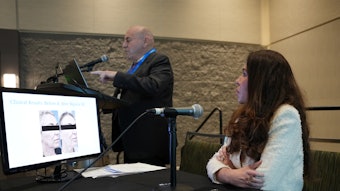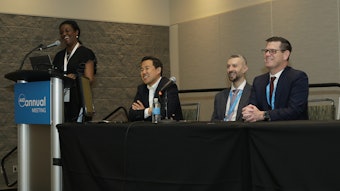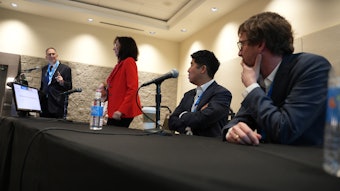Vitiligo treatments, myths, and concerns
A recent surge in research has sparked renewed interest in the increasingly common condition.

F040 – Vitiligo: Evidence-Based Medicine Applied to Cases
1-3 p.m. | Saturday, March 8
Location: W203C
Vitiligo has been known to the dermatologic community for years. According to the Global Vitiligo Foundation, 70 million people across the globe of all races, ethnicities, and genders suffer from vitiligo, which amounts to nearly 1% of the world’s population. Despite this prevalence, the foundation said there is very little research funding for vitiligo and many of the currently available treatments are not covered by insurance.
But things may be changing. David Rosmarin, MD, FAAD, chair of the department of dermatology at Indiana University School of Medicine in Indianapolis, said there has been growing recognition in the scientific community of the importance of vitiligo, which has corresponded with increased efforts to study the disease.
“There have been advances, including a mouse model of vitiligo, that have assisted in the understanding of the immunology of the disease,” he said. “Additionally, there are assessment tools and a newly established regulatory pathway to allow testing for medications that can help repigment patients.”
These latest developments and their impact on vitiligo treatment will be the subject of Saturday’s session, F040 – Vitiligo: Evidence-Based Medicine Applied to Cases.
Dr. Rosmarin said the most common concern patients with vitiligo have is that their disease will spread. This is why understanding signs of activity in the disease is important.
“Signs include trichrome vitiligo, confetti lesions, Koebner phenomena, and inflammatory vitiligo,” he said. “Additionally, it is important to halt progression of the disease urgently as that is significantly easier than subsequently trying to repigment a larger area.”
Myths and unknowns
In addition to concerns over spreading, Dr. Rosmarin said there are a number of persistent myths surrounding vitiligo, not the least of which is how it is acquired.
“Unfortunately, some in our community believe vitiligo is contagious. There is also concern that vitiligo can be passed down genetically,” he said. “While there is an increased risk of a patient having a child with vitiligo (at close to 4%, which is about six times higher than the baseline rate in the population), it is still more likely than not that a child born to a parent with vitiligo will not develop vitiligo. It is important for dermatologists to compassionately educate our patients and the community to dispel myths and disseminate the latest information we have.”
Despite having that information, there is still a good deal that is unknown about vitiligo and those who have it.
“We don’t know which patients are more likely to respond to certain treatments based on baseline demographics or disease characteristics,” Dr. Rosmarin said. “Additionally, we don’t know which patients will maintain repigmentation once achieved and how long it will last once treatment is stopped. Furthermore, we don’t understand the optimized way to combine treatments such as phototherapy and immunomodulators.”
Even though there are so many unknowns, Dr. Rosmarin said there is still a lot that dermatologists can do to assist people who are suffering from vitiligo.
“We have exciting new therapies in development and some traditional options that still have utility,” he said. “Some of our assumptions about vitiligo have been confirmed and some have been refuted by the most recent data. It’s an exciting and hopeful time for us in having options to help our patients.”
Dr. Rosmarin will lead tomorrow’s session, which includes presentations from vitiligo experts and a panel discussion.











